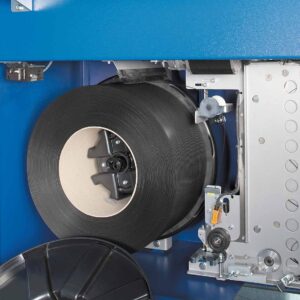Tapes are an everyday yet highly engineered product. Depending on their intended use and the materials from which they are made, tapes can be classified in several ways. Three common classifications include categorizing tapes by their base material, by their application, and by the type of adhesive they use. Each classification helps users choose the right tape for a particular need.
1. Classification by Base Material
This method categorizes tape according to the material that forms the tape’s backing. The most common base materials are:
- Plastic Tape:
Examples: Transparent packing tape (often made from Biaxially Oriented Polypropylene, or BOPP) and PVC electrical tape.
Uses: Ideal for packaging, insulation, and general fixing where a clear, strong, and sometimes weather-resistant tape is required. - Fabric Tape:
Examples: Cloth or fiber tapes, often seen as duct tape or heavy-duty repair tapes.
Uses: Known for high strength and durability, fabric tapes are used for binding, reinforcing, or temporary repairs in challenging conditions. - Paper Tape:
Examples: Masking tape or gummed paper tape.
Uses: Commonly used in painting for surface protection or applications requiring low adhesion, making them easy to remove without leaving residue.
2. Classification by Application
Another approach is to group tapes by their primary use or application:
- Packaging Tape:
Examples: Clear shipping tape used to seal boxes.
Uses: Designed for general-purpose adhesion in packaging, ensuring that boxes and parcels are securely sealed. - Electrical Tape:
Examples: PVC or vinyl electrical insulation tape.
Uses: Provides insulating properties essential for wrapping wires, insulating circuits, and protecting electrical connections. - Double-Sided Tape:
Examples: Adhesive tapes with glue on both sides used for mounting.
Uses: Ideal for mounting decorations, carpets, posters, or any application where a damage-free, temporary bond is required.
3. Classification by Adhesive Type
The third classification focuses on how the tape’s adhesive is activated and applied:
- Pressure-Sensitive Tape:
How It Works: These tapes bond instantly upon the application of light pressure.
Examples: Clear packaging tape, which is popular for daily use.
Uses: Often used in everyday applications like sealing boxes, labeling, and light mounting. - Hot-Melt Tape:
How It Works: These tapes use thermoplastic adhesives that must be heated (melted) for application and then quickly solidify as they cool.
Examples: Industrial hot-melt tapes that provide fast bonding and excellent heat resistance.
Uses: Ideal for applications where quick adhesion is needed, such as automotive repairs or electronics assembly. - Water-Activated Tape:
How It Works: The adhesive is activated by moisture; once wet, it forms a strong bond as the water evaporates.
Examples: Gummed paper tape used for sealing boxes.
Uses: Common in shipping, as it creates a bond that becomes even stronger over time, offering tamper evidence.
Choosing the Right Tape
When selecting tape, consider the three main aspects:
- Base Material: Determines the tape’s durability, flexibility, and suitability for the environment (e.g., plastic tapes for weather resistance, fabric tapes for high strength).
- Application: What the tape is ultimately used for—packaging, electrical insulation, or mounting.
- Adhesive Type: Dictates how the tape bonds and cures—whether instantly with pressure, through cooling of a hot adhesive, or via water activation.
For example, clear packaging tape (a pressure-sensitive plastic tape) is perfect for everyday sealing tasks. Double-sided tape offers damage-free mounting for decorations, while electrical insulation tape provides the necessary properties to protect circuits.
By understanding these classifications, users can select the tape that best fits their specific requirements—whether it’s for a quick household fix or a demanding industrial application.

